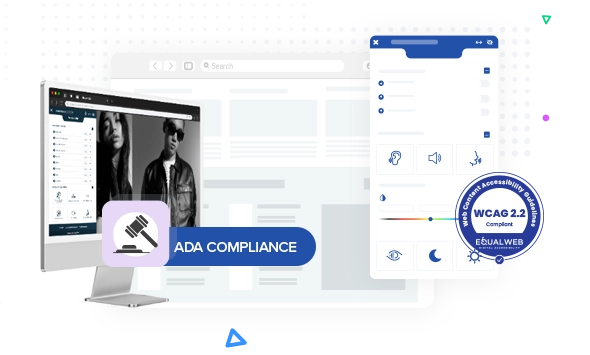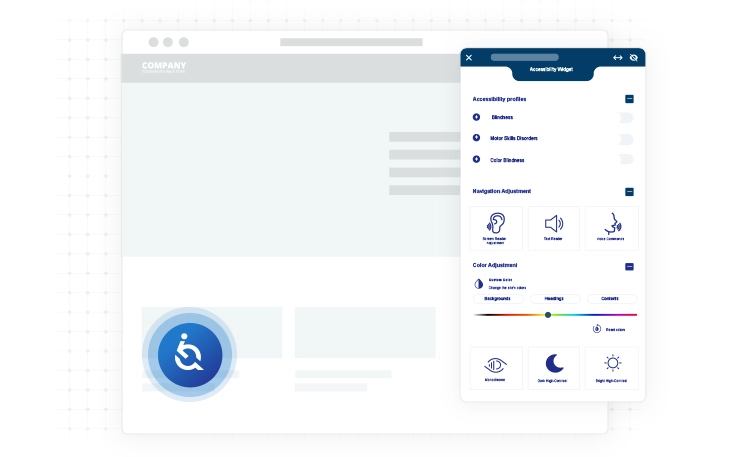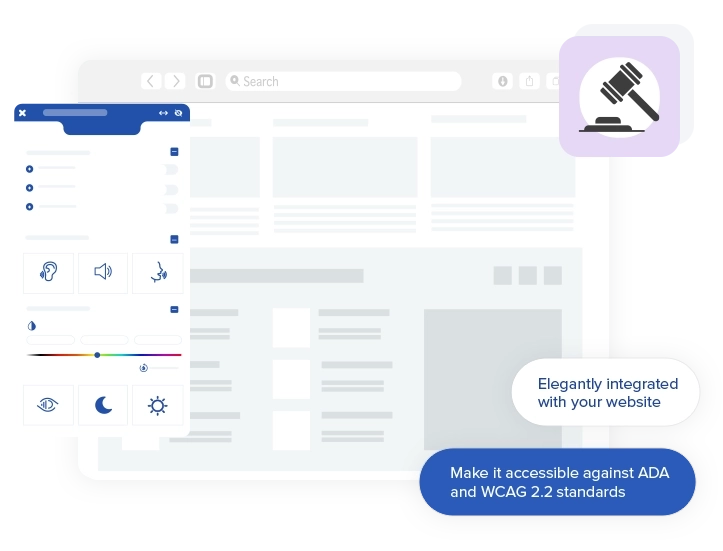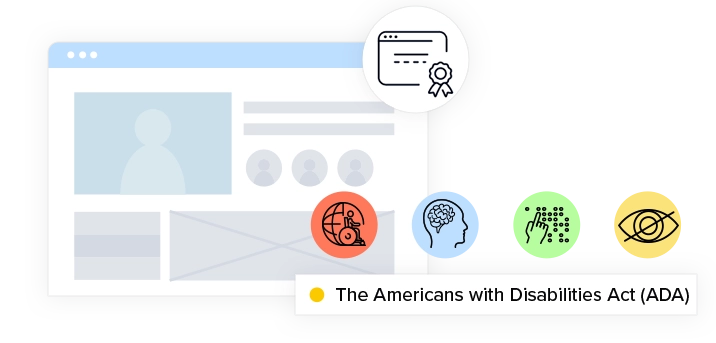Web Accessibility LawsWhile web accessibility laws and regulations may not be at the forefront of your mind, it is important to know that there are some very real risks associated with noncompliance. The web has given people with disabilities more access than ever before, and if you choose to ignore web accessibility laws then you risk having a lawsuit filed against you for discrimination. This page will cover what web accessibility laws entail, why they matter so much, and how EqualWeb can help businesses, organizations, and government agencies comply with web accessibility requirements, without any hassle. Get FREE risk assessment
Accessibility litigation consultingWe can get your website accessible and compliant in no time. What does it mean to have your website accessible?Just like existing laws require handicapped parking lots adjacent to stores, rails to access government buildings or driveways leading into businesses like banks, gas stations, etc., so are accessible websites for the disabled required. Online accessibility mostly caters to the visually or auditory impaired, but there are other needs that require accommodation as well. Currently, there is a stream of regulations or testable standards that require compliance of websites: ADA, WCAG, Section 508, AODA, EN 301549, EAA, IS 5568, and more. As long as your website is not fully compliant, your business faces litigation risks. Consult with expert for FREE
Litigation breakdownU.S. laws make it very difficult for businesses and organizations to defend against disability-related non-discriminatory lawsuits. 
ADA Compliance standardsUptick in Web accessibility lawsuitsHow likely are you to get hit by a disability-related claim? In 2020, ADA federal lawsuits passed the 11,000 mark nationwide. That’s more than 30 cases per day. And pre-litigation demand letters, resulting in private settlements, are estimated to be much higher. After hovering under the radar for the most part of the last two decades, Web accessibility-related lawsuits exploded since 2017—following the Department of Justice’s labeling of websites as places of “public accommodations,” requiring ADA compliance—bringing the inaccessible virtual world into the forefront of the legal system. 
Who is liable?In spite of regulation ambiguity, the simple answer is: everyone. The vast majority of websites are not fully compliant, putting them at major legal risk. Furthermore, achieving full compliance can be a tedious task, modifying website codes while costing a fortune (up to tens of thousands of dollars). The good news, however, is that EqualWeb provides easy, automatic, and cost-effective solutions to all business sizes, with its state-of-the-art technology, compliance experts, and various plans tailored for each need. 
Web accessibility complianceLet us make it rather simple for you. There are many compliance requirements that stem from different laws and regulations, but they all boil down to conformance against WCAG standards. Consult NOWRead about government web accessibility standards, and relevant legislation, in different countries:
|
Web Accessibility is EqualWeb
Accessibility made easy with AI technology and certified experts
The world’s #1 web accessibility solution
Get Free trial
7 days FREE Trial Unlimited pageviews for any plan
|

































